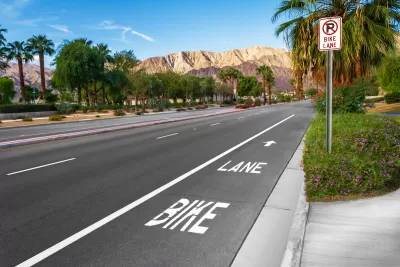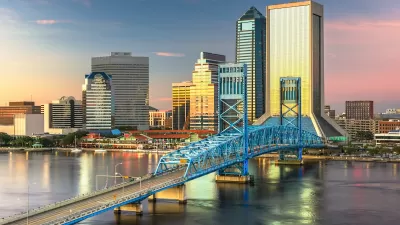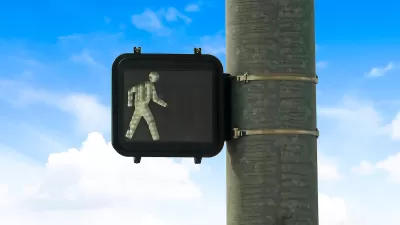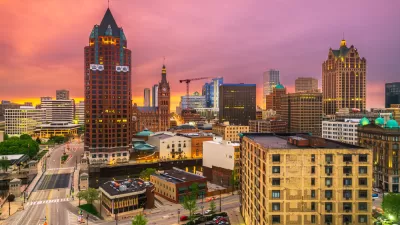Often car-centric, these cities in the South and West are working to make their roads safer for pedestrians, cyclists, and transit riders.

As their populations—and the number of pedestrian deaths—grow, Sun Belt cities Jacksonville Tucson and Memphis are rethinking their transportation planning strategies to improve safety and mobility for their residents. An article by Dan Zukowski, Julia Himmel, and Shaun Lucas in Smart Cities Dive reveals that “Nine of the 10 most dangerous states for pedestrians are in the Sun Belt, according to a 2022 Smart Growth America report.”
The article describes the road safety efforts that three cities—Tucson, Jacksonville, and Los Angeles. In Tucson, “The city is now looking to introduce ‘road diets’ with bikeways and safer crossings, thus reducing and slowing traffic for a ‘better pedestrian experience on those roadways as well as reducing vehicular crashes,’” according to its Complete Streets program coordinator.
In car-centric Jacksonville, “The [Jacksonville Transportation Authority] is working with the city of Jacksonville, the North Florida Transportation Planning Organization and the Florida Department of Transportation to focus road construction more on people and less on automobiles as they build additional roadways” by improving pedestrian and bike infrastructure along transit corridors, among other projects.
In Los Angeles, where half of the county’s fatal and severe-injury crashes occur on 4 percent of roads, “DPW is implementing tactics to improve pedestrian safety that include curb extensions to slow vehicles making right turns, high-visibility crosswalks and traffic signals that give pedestrians extra time.” Thanks to new flexibility created by a state law that allows cities to adjust speed limits for safety, Los Angeles lowered speed limits on 177 miles of road in 2022.
FULL STORY: Can Sun Belt cities go from danger zones to pedestrian-friendly?

Manufactured Crisis: Losing the Nation’s Largest Source of Unsubsidized Affordable Housing
Manufactured housing communities have long been an affordable housing option for millions of people living in the U.S., but that affordability is disappearing rapidly. How did we get here?

Americans May Be Stuck — But Why?
Americans are moving a lot less than they once did, and that is a problem. While Yoni Applebaum, in his highly-publicized article Stuck, gets the reasons badly wrong, it's still important to ask: why are we moving so much less than before?

Using Old Oil and Gas Wells for Green Energy Storage
Penn State researchers have found that repurposing abandoned oil and gas wells for geothermal-assisted compressed-air energy storage can boost efficiency, reduce environmental risks, and support clean energy and job transitions.

Updating LA’s Tree Rules Could Bring More Shade to Underserved Neighborhoods
A new USC study finds that relaxing Los Angeles’ outdated tree planting guidelines could significantly expand urban tree canopy and reduce shade disparities in lower-income neighborhoods, though infrastructure investments are also needed.

California's Canal Solar Projects Aim to Conserve Resources and Expand Clean Energy
California’s Project Nexus has begun generating electricity from solar panels installed over irrigation canals, with researchers and state agencies exploring statewide expansion to conserve water and boost clean energy production.

HHS Staff Cuts Gut Energy Assistance Program
The full staff of a federal program that distributes heating and cooling assistance for low-income families was laid off, jeopardizing the program’s operations.
Urban Design for Planners 1: Software Tools
This six-course series explores essential urban design concepts using open source software and equips planners with the tools they need to participate fully in the urban design process.
Planning for Universal Design
Learn the tools for implementing Universal Design in planning regulations.
Heyer Gruel & Associates PA
City of Moreno Valley
Institute for Housing and Urban Development Studies (IHS)
City of Grandview
Harvard GSD Executive Education
Salt Lake City
NYU Wagner Graduate School of Public Service
City of Cambridge, Maryland





























